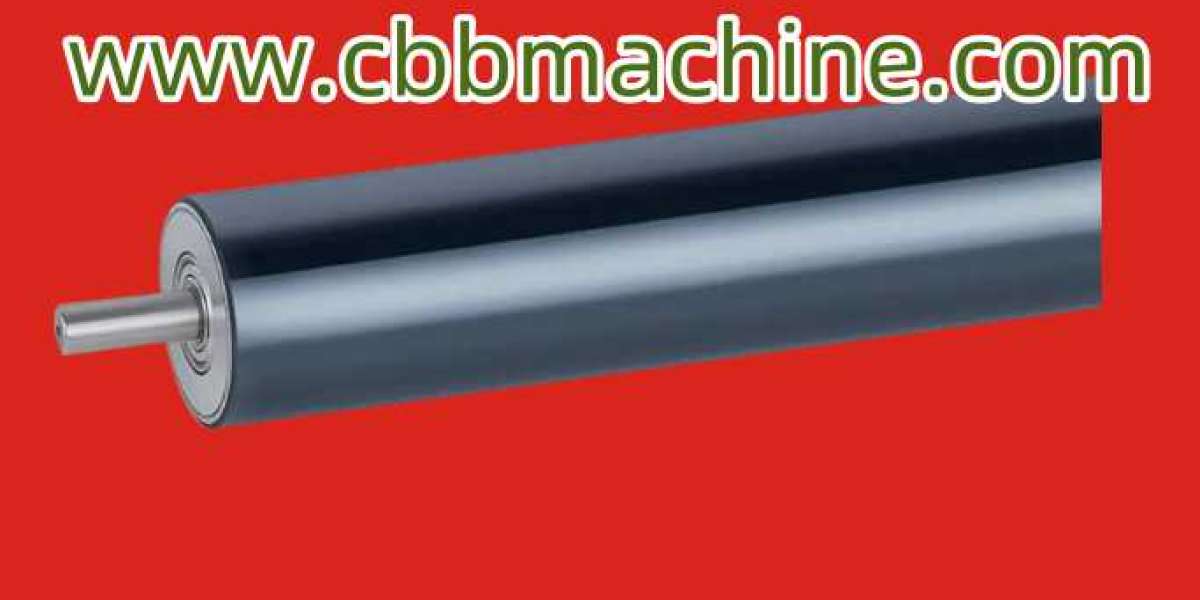Magnetic Powder Brake: A Game-Changer in Industrial Control Systems
In modern industrial manufacturing, maintaining control over speed, torque, and tension is crucial for efficiency and product quality. Whether you're winding materials, controlling a conveyor system, or managing high-speed operations, precise control mechanisms are key to optimal performance. One such technology that has significantly impacted industrial machinery is the Magnetic Powder Brake. This innovative system provides unparalleled torque control, reduced maintenance needs, and improved operational efficiency.
In this blog, we'll explore how Magnetic Powder Brakes work, their advantages, and why they are a must-have component in industries where precision and reliability are essential.
What is a Magnetic Powder Brake ?
A Magnetic Powder Brake is a device used to control the speed and torque of rotating machinery. Unlike traditional mechanical brakes that rely on physical contact between parts to slow down a system, the Magnetic Powder Brake uses electromagnetic forces to generate resistance without any direct physical contact. This technology utilizes a fine magnetic powder suspended between the rotor (the rotating component) and the stator (the stationary component) of the brake.
When a current passes through the stator's electromagnetic coil, it generates a magnetic field. This magnetic field causes the fine powder to align and form a chain-like structure, which then creates resistance, controlling the rotation of the rotor. The torque is proportional to the strength of the magnetic field, which can be adjusted by varying the current. This non-contact braking system offers smooth, gradual control over speed and torque, making it ideal for a wide range of industrial applications.
Advantages of Magnetic Powder Brakes
1. Precise Torque Control
One of the most significant advantages of using a Magnetic Powder Brake is its ability to provide precise torque control. Whether you need to slow down, speed up, or maintain a constant speed, the torque can be easily adjusted by controlling the strength of the magnetic field. This level of control is crucial in processes where material tension or speed must be precisely regulated to prevent defects or damage to materials.
2. Non-Contact Operation
Traditional braking systems often rely on friction to generate resistance, which results in wear and tear over time. In contrast, Magnetic Powder Brakes operate without direct contact between the components. The absence of friction means that these systems experience minimal wear, leading to longer lifespan and lower maintenance costs. Additionally, there is less risk of overheating, making them suitable for high-speed applications where other braking systems may fail due to excessive heat.
3. Smooth and Gradual Braking
Another advantage is the ability to apply smooth, gradual braking without the jerky movements that are often seen in traditional mechanical brakes. This is particularly important in high-speed industrial applications where smooth operation is essential to maintain material integrity and prevent operational disruptions. In winding or unwinding applications, for instance, sudden or uneven braking can cause material to break or misalign, leading to significant production losses.
4. Reduced Maintenance Needs
Since Magnetic Powder Brakes operate with minimal physical contact, they require much less maintenance than traditional braking systems. Mechanical brakes often suffer from wear, requiring frequent replacements of components like brake pads or discs. With a Magnetic Powder Brake, there are fewer parts that can degrade over time, resulting in reduced downtime and maintenance costs. For industries that run 24/7, this is a major benefit, as it helps ensure continuous operation with less interruption.
5. High Heat Resistance
In high-performance applications, machines often generate a significant amount of heat. Traditional brakes, which rely on friction to slow down machinery, can suffer from overheating and degradation under high-speed conditions. Magnetic Powder Brakes, however, are designed to handle high thermal loads efficiently. The non-contact nature of these brakes prevents heat buildup and ensures that the system remains stable even in challenging environments.
Applications of Magnetic Powder Brakes
The versatility of Magnetic Powder Brakes makes them suitable for a wide variety of industrial applications. Some of the most common uses include:
1. Winding and Unwinding Systems
In industries such as textiles, paper, and film manufacturing, Magnetic Powder Brakes are used to maintain consistent tension in winding and unwinding operations. By adjusting the braking force, the system can regulate the speed and tension of the material being processed, preventing damage such as tearing, stretching, or misalignment. This is especially important in processes where high-quality material handling is required.
2. Printing and Packaging
In the printing and packaging industries, Magnetic Powder Brakes are used to control the movement of printing presses, packaging machines, and labeling systems. By providing precise speed and torque control, these brakes ensure that the machines run smoothly and that the final product is of high quality. They also reduce the risk of material wastage due to over-acceleration or uneven tension.
3. Conveyor Systems
In automated production lines and conveyor systems, Magnetic Powder Brakes help regulate the speed and deceleration of the conveyor belts. Smooth braking is essential to prevent items from being damaged as they travel along the belt. The brakes can also be used to stop the belt gradually, allowing for more controlled loading and unloading of materials.
4. Textile Industry
In textile manufacturing, controlling the speed of machines like looms or knitting machines is critical to avoid fabric damage. Magnetic Powder Brakes are used to control the movement of yarns and fabrics, ensuring that the material does not stretch too much or tear during processing. This improves the overall efficiency of the system and ensures that the final product meets quality standards.
5. Test Equipment and Load Simulation
Magnetic Powder Brakes are often used in test equipment to simulate different load conditions. These brakes provide adjustable resistance, making them ideal for testing torque, speed, and load-bearing capabilities of various mechanical systems. This makes them an essential component in engineering applications where precise measurements are required.
Why Choose Magnetic Powder Brakes for Your Operations?
If you're involved in manufacturing, production, or automation, incorporating a Magnetic Powder Brake into your system can offer significant benefits in terms of precision, efficiency, and longevity. Their ability to provide smooth, precise control of torque and speed makes them an indispensable tool in various industries. With reduced wear and maintenance, they also contribute to lowering overall operational costs.
Conclusion
The Magnetic Powder Brake is a powerful tool in modern industrial applications, offering precise control, reduced maintenance, and improved operational efficiency. Whether it's for winding systems, packaging lines, or conveyor belts, these brakes provide the flexibility and reliability needed to keep your machinery running smoothly.











